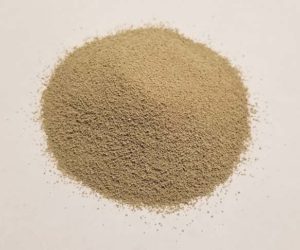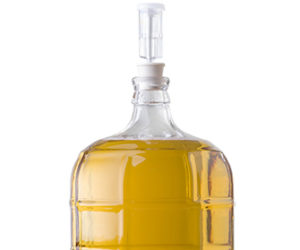 Dear Wine Wizard,
Dear Wine Wizard,
I am in the process of vinting a Champagne, and after having read of a couple of different ways to create the “sparkling” effect, I am now thoroughly confused. I started from a Sauvignon Blanc. One theory suggests that all that is needed is a little sugar in each of the bottles as they are capped. Another school of thought suggests adding champagne yeast. A third recommends adding both. Am I correct in assuming that too much food will result in the loss of the batch? What do you recommend?
Lando Ettrick
Tucson, Ariz.
Wine Wizard replies: First let this Wine Wizard ruminate over the techniques mentioned above. Adding a little sugar (called priming sugar in the beer trade, dosage in the wine business) to newly fermented wine and then capping the stuff up tight might result in an adequate amount of sparkle — if the remaining yeast are still healthy enough to carry out the secondary fermentation. If only yeast are added, there might not be enough sugar left from the original Sauvignon Blanc fermentation for the yeast to chew up into ethanol and carbon dioxide, and you might not get any bubbles that way either. I suggest trying to get your technique as close as possible to the Methode Champenoise, the traditional way that Champagne is made in France. I’ll leave out the cryptic French winespeak.
- Ferment your base wine (in your case, the Sauvignon Blanc) to dryness in a typical five-gallon carboy or other similar vessel. Your acid should be crisp and tart, and your wine clean and free of any off-odors.
- Prepare your bottles. In this case you should use 750-milliliter Champagne bottles from your local homebrewing or winemaking store. Clean and sanitize as usual, except you’re going to need to rent a bottle capper (not corker) and the caps to go with it.
- Now comes the tricky part: getting the balance of yeast, extra sugar, and yeast nutrient right so you have adequate sparkle but not so much gas produced that your bottles explode. Start with 1 1/2 teaspoon sugar per bottle.
Dear Wine Wizard,
I have been making wine for 30-plus years and have had reasonable success with most recipes. One exception is blackberry wine. The wine is quite good, but six months to a year after bottling, the color precipitates out. The flavor is still okay, but the sediment is easily stirred up. I have always thought it was probably something to do with pH. However, I religiously use an acid test kit. I have even changed acid test kits, but the problem still exists. I have tried using bottle caps instead of corks, trying to rule out oxidation. Recently, I have begun to purge the carboy into which I am racking the wine with carbon dioxide gas to eliminate oxidation. Any suggestions?
Dan Derrick
Irmo, S.C.
Wine Wizard replies: Even though I’d have to see the recipe and an outline of what you do every step of the way to truly diagnose the cause, I can, however, tell you the problem. What we’re looking at here is a classic example of what happens to all wine eventually, precipitation of solids. Even the best Grand Crus Bordeaux suffer a loss of color, tannin, and other goodies over time as the chemical equilibrium of the wine forces these compounds and others out of solution (and turns them into an unsightly glop that collects at the bottom of the bottle). Your situation seems a little bit different, however, because you’re losing a lot of precipitate in what seems a fairly short time.
The problem is most likely not one of acidity or oxidation, though both of these things are certainly important parameters in winemaking. Mentally search through your winemaking procedure for a possible culprit, one that might affect or completely upset the chemical equilibrium in the bottle and cause these colored compounds to drop to the bottom like so many lead weights. Things that come to mind:
Are you storing your wine properly? Extreme heat or cold or even drastic shifts in temperature can cause tannins and anthocyanins (the astringent compounds and the colored compounds in wine, respectively) to change their chemical structure so that they no longer remain soluble in the wine like they’re supposed to. Make sure your wines are not subjected to large swings in temperature during storage. I keep my wines in the crawlspace under my stairs, a spot that stays a pretty constant temperature year-round.
Are you racking your wines enough? If you don’t go through at least three or four rackings before you bottle your wines, you could greatly enhance the chance of gook ending up in your bottles — even if the wine appeared clear enough originally. Most commercial wines are racked at least three or four times during the production process and then are aged in barrels or tanks for at least six months before bottling.
Are you introducing any extra proteins to the wine (such as some types of yeast nutrient that are high in protein content) before bottling and not allowing adequate time for these compounds to settle out? Proteins have the nasty habit of pulling anthocyanins out of solution and in fact are often used as a pre-bottle fining agent to “soften” wines by doing just that. Beware of recipes and procedures that don’t allow adequate settling time — and subsequent racking time — after the addition of proteinaceous agents and other additives.
Aside from these processes and storage parameters, it could be that the fruit (in this case, blackberries) doesn’t lend itself well to the kind of winemaking that you’re doing. Many fruit-wine makers find that they have a difficult time getting their fruit of choice to “behave” and it’s usually not a question of acidity, pH, or oxidation; some fruit just doesn’t lend itself to winemaking without a lot of human intervention. I suggest using pectic enzymes to break up some of the long-chain carbohydrate compounds that can mess up a fruit wine’s stability, though blackberries are not a naturally pectin-rich fruit like, say, apples or pears. You also might want to try to use at least a 50-50 ratio of grape juice concentrate to blackberry juice. Concentrate is available in all winemaking supply stores. I suggest using Zinfandel or Merlot juice. This will provide a healthier environment for the yeast and compensate for many of the problems that can occur when fermenting with 100 percent non-grape fruit juice and still maintain a blackberry flavor and aroma profile.
Dear Wine Wizard,
I read in a wine book that the sulfite residue from sulfite sterilizing solution used to clean bottles provides adequate sulfite. Some members of my home winemaking club, Cellarmasters, add no sulfite. Others add a precise measurement based on pH. What do you suggest?
Don Harris
Thousand Oaks, Calif.
Wine Wizard replies: To sulfite or not to sulfite: That is the question. It’s one that fires hot debates in the cellars of wineries worldwide. Sometimes seen as a personal choice, the use of sulfites in winemaking requires a delicate sense of balance and a light (though judicious) hand. Otherwise, your wine can be irreparably ruined.
Sulfites serve several purposes in winemaking. They provide antimicrobial, antibrowning, and antioxidant activities in musts, juices, and wines. Naturally, since winemaking is not a sterile process (and there are always the droves of spoilage organisms waiting for a chance to get in on the action), it’s important to keep this in mind when making decisions about how much sulfite to add and when.
Sulfites added at bottling are intended to further protect the wine once you have no more control over it. A high enough sulfite level — most winemakers will say about 40 parts per million (milligrams per liter) — will retard the growth of most microorganisms in the bottle that could cause off odors, unsightly precipitates, or even secondary fermentation. However, be aware that each batch of wine is different and that winemakers must rely on their experience in addition to hard numbers. 40 ppm may not get the job done, especially if you don’t practice stringent sanitation or use especially moldy or damaged fruit.
It is usually a good idea to use a tool such as the commercially available Sulfikit to measure the sulfur dioxide in your wine and then to calculate how much more you need to add at bottling to stay within a reasonable level. Much sulfur dioxide gets bound up in the wine during the fermentation and racking processes and thus becomes unavailable to the solution as an antimicrobial agent when it comes time to bottle. So it makes sense that 40 ppm added at the crusher will not result in 40 ppm before bottling — and you’d have to swirl your bottles with a pretty potent sulfur dioxide solution to get the desired amount into the finished product.
My recommendation: Measure the amount of sulfite you have, then do the math and meter a sulfur dioxide solution of the appropriate concentration into your bottles before filling them with wine.
Even many commercial winemakers have to play this one by ear and aren’t any better equipped to do it than you are.
The Wine Wizard is an expert on home winemaking whose identity, like the identity of all superheroes, must be carefully guarded. Send in your question to the wizard at [email protected].







